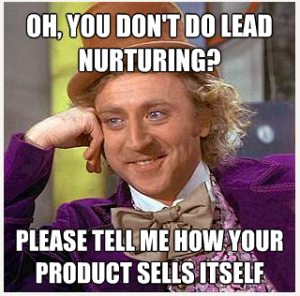Building Awareness: Your First Step Towards Demand Generation Part 2
 In our last post titled Building Awareness: Your First Step Towards Demand Generation we talked about using search engine optimization, viral marketing, social media marketing and email to help build awareness and generate demand. We’ll add a few more items to the list in part 2 of this post.
In our last post titled Building Awareness: Your First Step Towards Demand Generation we talked about using search engine optimization, viral marketing, social media marketing and email to help build awareness and generate demand. We’ll add a few more items to the list in part 2 of this post.
Pay Per Click Advertising
Using web publishers to create awareness accomplishes two objectives: 1) it gets your message in front of prospects through a third party (who has likely earned the trust of your market), and 2) it allows you to measure results and pay only for responses to your message. Be sure to advertise with publishers whose content is relevant to your business; simply buying ad space on popular websites and search engines doesn’t always produce good results. Narrow your focus to include publishers who reach your target audience.
Outbound marketing is a more direct approach to creating awareness. Using outbound techniques may run the risk of alienating prospects; however, results are measurable and often leads are qualified sooner than when using inbound marketing methods.
Telemarketing
Using call centers, automated messaging or staffing telemarketers can be effective in creating awareness; however, telemarketing effectiveness is often based primarily on timing (where a prospect lies in the sales cycle). Many of today’s B2B marketing professionals consider telemarketing a costly option that does not produce comparable results to inbound marketing, but it does have its place in certain industries. This technique provides a way to instantly respond to questions, so it can be a good way to introduce a complex product.
Outsourced Lead Generation
There are several ways to create awareness through companies like Lead Liaison. We use web forms, landing pages, email campaigns and website tracking to build lead lists. These lists include targeted prospects that may or may not be aware of your company or products but they have a need that requires a solution. Often this strategy is comparable to SEO because the leads that are captured have shown an active interest in what your company provides.
This concludes our series on Building Awareness: Your First Step Towards Demand Generation. Are you interested in using Lead Liaison to help build awareness and drive demand? Contact us ASAP if that interests you.











